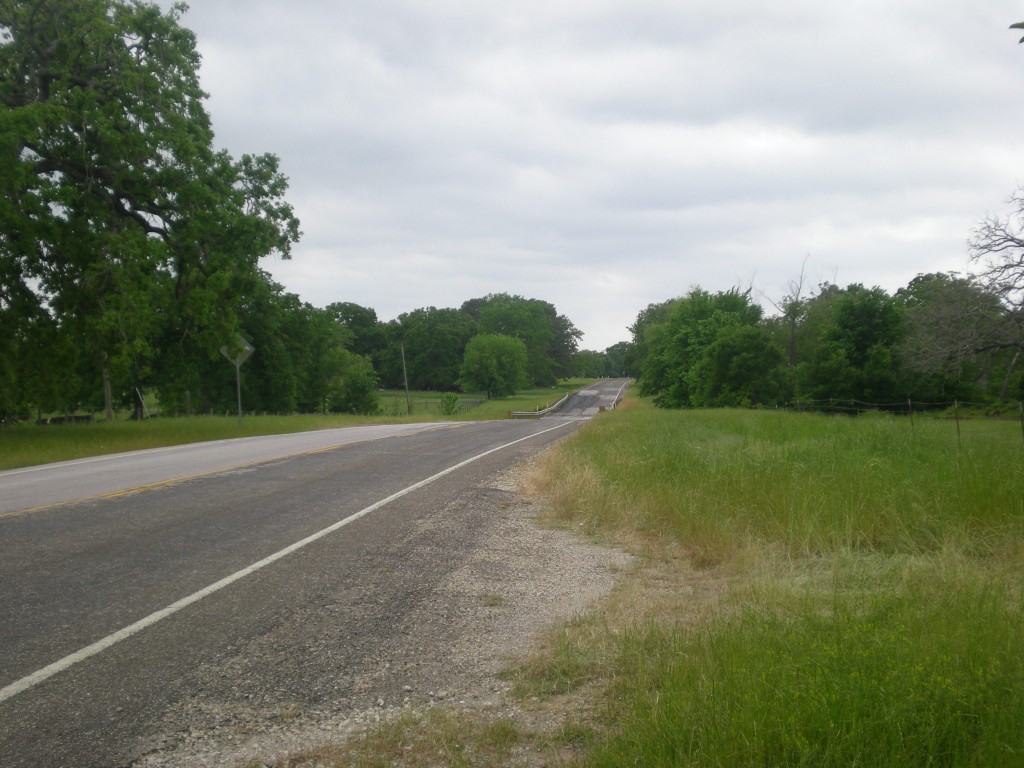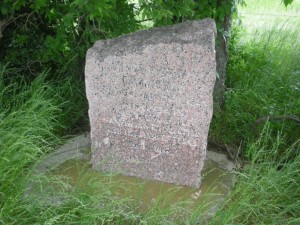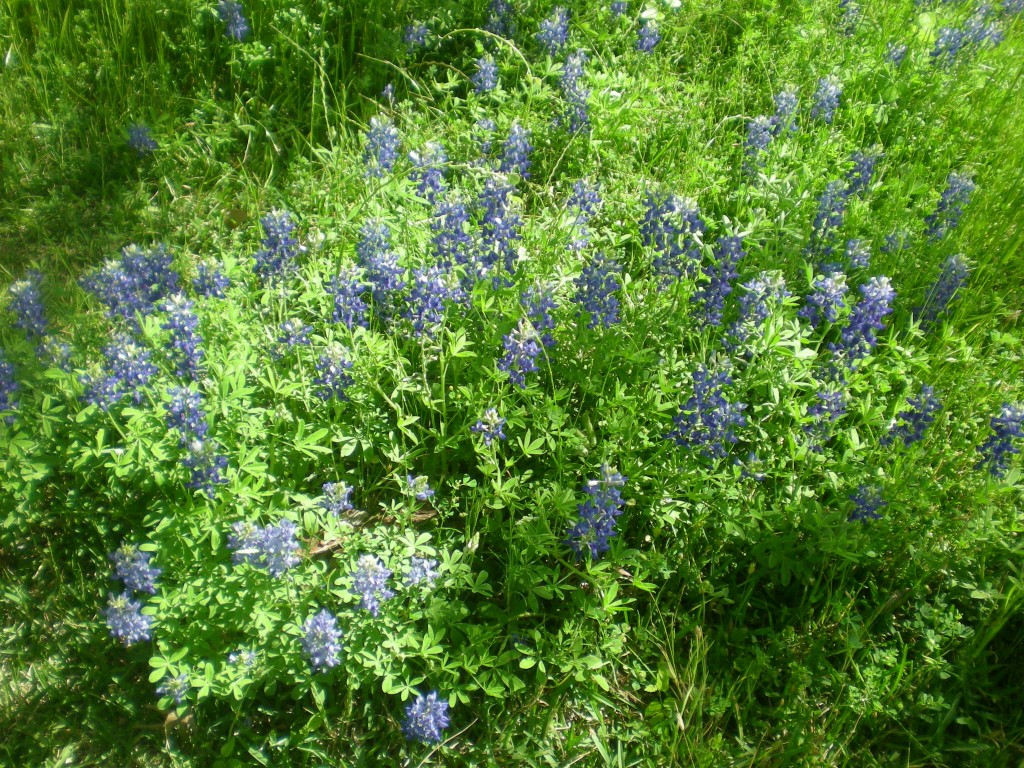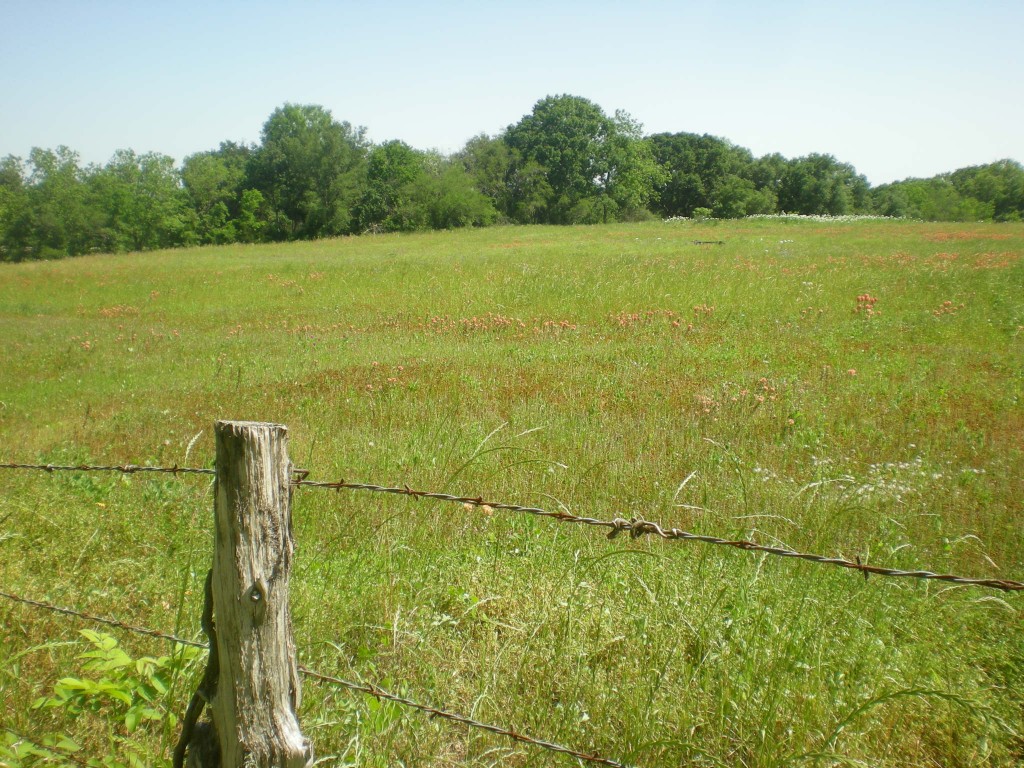Not long after Easter, I flew to Texas to visit members of my family. First to Dallas, then a drive to San Antonio, then back to Dallas. I also wanted to squeeze in a couple of days in Central Texas, visiting a few places I’d never been. My brother Jay came with me on the excursion, focusing on College Station, Texas, home of the enormous Texas A&M University, which also happens to be my maternal grandfather’s alma mater: Class of 1916.
In all the time I’ve spent in Texas, I’d never made it there. That’s probably because College Station isn’t on the way anywhere, especially if you spend most of your time on the San Antonio-Austin-Dallas axis. But A&M looms large in Texas lore, so I’d have been interested in visiting even if my grandfather hadn’t started his career as a civil engineer there.
We drove on large roads and small. We made a point of driving on a highway called Texas OSR between I-45 and Texas 6. It was a short stretch of road through springtime green, and green is no sure thing even this time of the year; it means there’s been rain recently.
 What’s so special about Texas OSR, besides the fact that it’s the only state highway in the enormous highway system of an enormous state to not include any numbers in its name? It’s a stretch of the Old San Antonio Road, also known as the Camino Real, the King’s Highway. The modern OSR is a fragment of the bygone route from Louisiana to Coahuila, by way of San Antonio. Still trod, maybe, by the shades of Spaniards and their horses.
What’s so special about Texas OSR, besides the fact that it’s the only state highway in the enormous highway system of an enormous state to not include any numbers in its name? It’s a stretch of the Old San Antonio Road, also known as the Camino Real, the King’s Highway. The modern OSR is a fragment of the bygone route from Louisiana to Coahuila, by way of San Antonio. Still trod, maybe, by the shades of Spaniards and their horses.
 A number of weather-worn markers on the side of the road explain the road’s historic significance. Though hard to read – even if this image were full size, it would be next to impossible to make out — the markers themselves are historic, put there by the Daughters of the American Revolution and the state of Texas in 1918.
A number of weather-worn markers on the side of the road explain the road’s historic significance. Though hard to read – even if this image were full size, it would be next to impossible to make out — the markers themselves are historic, put there by the Daughters of the American Revolution and the state of Texas in 1918.
Central Texas in the spring also luxuriates in wildflowers, along the side of the roads, stretching off into vast fields, in random colorful spots. You can see the famed bluebonnets and other blue blossoms…
 … but also a sea of others: red, white, orange, yellow, pink. Add a windmill to this scene and you have something landscape painters have been focusing on for more than a century.
… but also a sea of others: red, white, orange, yellow, pink. Add a windmill to this scene and you have something landscape painters have been focusing on for more than a century.
 For true wildflower enthusiasts, there’s this index. It’s an astonishing variety.
For true wildflower enthusiasts, there’s this index. It’s an astonishing variety.